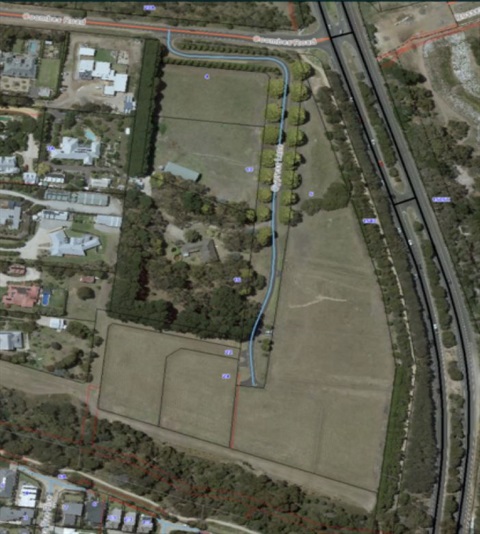WHO, with support of the Strategic Advisory Group of Experts (SAGE) on Immunization and its COVID-19 Vaccines Working Group, continues to review the emerging evidence on the need for and timing of a booster dose for the currently available COVID-19 vaccines which have received Emergency Use Listing (EUL). This statement reflects the current understanding of vaccine performance and supply, as of the time of update.
Definitions:
The following definitions and terminology are used by WHO throughout its policy recommendations on COVID-19 vaccination. This note focuses only on booster doses.
- Booster doses are administered to a vaccinated population that has completed a primary vaccination series (currently one or two doses of COVID-19 vaccine depending on the product) when, with time, the immunity and clinical protection has fallen below a rate deemed sufficient in that population. The objective of a booster dose is to restore vaccine effectiveness from that deemed no longer sufficient.
- Additional doses of a vaccine may be needed as part of an extended primary series for target populations where the immune response rate following the standard primary series is deemed insufficient. The objective of an additional dose in the primary series is to optimize or enhance the immune response to establish a sufficient level of effectiveness against disease. In particular, immunocompromised individuals often fail to mount a protective immune response after a standard primary series, but also older adults may respond poorly to a standard primary series.
Rationale for the administration of booster doses
The current primary goal of immunization in the COVID-19 pandemic remains to protect against hospitalization, severe disease and death. Hence, booster doses may only be needed if there is evidence of insufficient protection against these disease outcomes over time.
The degree of waning of immunity and need for booster doses of vaccine may differ between vaccine products, target populations, circulating SARS CoV-2 virus, in particular variants of concern (VoC), and intensity of exposure. For some vaccines, restricted booster indications have been included into the product label of some jurisdictions.
In a period of continued global vaccine supply shortage equity considerations at country, regional and global level remain an essential consideration to assure vaccination of high priority groups in every country. Improving coverage of the primary vaccination series should be prioritized over booster vaccination.
Factors to be considered
1. Waning immunity
Neither an immune correlate of protection nor of the duration of protection has been established to date. Studies suggest a correlation between the efficacy/effectiveness of different vaccines against symptomatic disease and mean neutralizing antibody titers induced by those vaccines in the short-term (1), but it is unclear if declining titers over time since vaccination are indicative of declining vaccine effectiveness, especially against VoCs. While data on immunogenicity of some vaccines suggest that antibodies persist for at least 6 months (2), waning of neutralizing antibodies has been reported (3). Although there may be a loss of protection against infections by SARS-CoV-2, protection against severe disease is more durably retained due to anamnestic humoral and cell-mediated immunity (1).
2. Vaccine effectiveness
Most studies on duration of protection are observational studies. Although often difficult to interpret due to confounding factors (4), emerging data consistently show a decline in vaccine effectiveness against infection and milder forms of COVID-19 over time. With respect to duration of protection against disease requiring hospitalization, current data show an overall continued high level of effectiveness, although data vary across age-groups, target populations, and products (5). The vast majority of current infections are observed in unvaccinated populations, and if breakthrough infections occur in vaccinated persons, they are in most cases less severe than those seen in unvaccinated persons (6).
3. Global vaccine supply and global and national equity
National vaccination programme policy decisions to add a booster dose should take into account the strength of evidence regarding the need for these doses, their safety and effectiveness, as well as the global availability of vaccines. Offering booster doses to a large proportion of a population when many have not yet received even a first dose undermines the principle of national and global equity. Prioritizing booster doses over speed and breadth in the initial dose coverage may also damage the prospects for global mitigation of the pandemic, with severe implications for the health, social and economic well-being of people globally.
Data needs for policy
The introduction of booster doses should be rigorously evidence driven. The duration of vaccine-induced protection is likely to depend on many variables, such as the vaccine product, the primary vaccination schedule, the age and/or underlying medical conditions of the vaccine recipient, risk of exposure, and circulation of specific variants. The decision to recommend a booster dose is complex and requires, beyond clinical and epidemiological data, a consideration of national strategic and programmatic aspects, and importantly an assessment of the prioritization of globally limited vaccine supply. In this context, prioritization should be given to the prevention of severe disease. Data needs can be grouped into the following categories:
1. Assessing the need for booster doses:
Epidemiology and burden of disease:
- Epidemiology of breakthrough cases, by disease severity, age, co-morbidity and risk groups, exposure, type of vaccine and time since vaccination, and in the context of VoCs.
Vaccine-specific data:
- Efficacy, effectiveness, duration of protection of vaccines in the context of circulating VoCs from observational studies and if possible randomized controlled trials.
- Supplementary evidence from immunological studies assessing binding and neutralizing antibodies over time, as well as biomarkers of cellular and durable humoral immunity when possible.
2. Assessing the performance of booster doses:
- For most emergency use listed COVID-19 vaccines, small scale clinical studies have been conducted demonstrating a strong ability to boost the immune response following currently recommended primary series.
- While preliminary data on effectiveness of booster vaccination have been obtained for one product (7), additional data on efficacy, effectiveness, and duration of protection of original and variant-adapted vaccine booster doses in the context of SARS-CoV-2 wild-type and VOCs would be helpful.
- Safety and reactogenicity of booster vaccination, including heterologous boosting, needs to be studied at a larger scale.
3. Additional considerations include:
- Optimal timing of the booster dose, consideration of homologous versus heterologous boosters, possibility for dose-sparing for booster doses, booster needs in previously infected individuals, specification and prioritization of high-risk populations, programmatic feasibility and sustainability, community perception and demand as well as equity considerations.
Conclusions
Introducing booster doses should be firmly evidence-driven and targeted to the population groups in greatest need. The rationale for implementing booster doses should be guided by evidence on waning vaccine effectiveness, in particular a decline in protection against severe disease in the general population and in high-risk populations, or due to a circulating VoC. To date, the evidence remains limited and still inconclusive on any widespread need for booster doses following a primary vaccination series.
In the context of ongoing global vaccine supply constraints, broad-based administration of booster doses risks exacerbating inequities in vaccine access by driving up demand and diverting supply while priority populations in some countries, or in subnational settings, have not yet received a primary vaccination series. The focus remains on urgently increasing global vaccination coverage with the primary series driven by the objective to protect against severe disease.
SAGE will deliberate on the evidence for a booster dose during an upcoming Extraordinary SAGE meeting in November 2021.
References:
- Khoury DS, Cromer D, Reynaldi A, Schlub TE, Wheatley AK, Juno JA et al. Neutralizing antibody levels are highly predictive of immune protection from symptomatic SARS-CoV-2 infection. Nature Medicine. 2021;27:1205-11. doi: 10.1038/s41591-021-01377-8.
- Emary KRW, Golubchik T, Aley PK, Ariani CV, Angus B, Bibi S et al. Efficacy of ChAdOx1 nCoV-19 (AZD1222) vaccine against SARS-CoV-2 variant of concern 202012/01 (B.1.1.7): an exploratory analysis of a randomised controlled trial. Lancet. 2021;397:1351-62.
- N Engl J Med. 2021;384:80-2. doi: 10.1056/NEJMc2032195.
- Considerations in boosting COVID-19 vaccine immune responses. Lancet. 2021. doi: 10.1016/S0140-6736(21)02046-8.
- Vaccine effectiveness and duration of protection of Comirnaty, Vaxzevria and Spikevax against mild and severe COVID-19 in the UK. medRxiv. 2021:2021.09.15.21263583. doi: 10.1101/2021.09.15.21263583.
- Bergwerk M, Gonen T, Lustig Y, Amit S, Lipsitch M, Cohen C et al. Covid-19 Breakthrough Infections in Vaccinated Health Care Workers. New England Journal of Medicine. 2021. doi: 10.1056/NEJMoa2109072.
- Bar-On YM, Goldberg Y, Mandel M, Bodenheimer O, Freedman L, Kalkstein N et al. Protection of BNT162b2 Vaccine Booster against Covid-19 in Israel. N Engl J Med. 2021. doi: 10.1056/NEJMoa2114255.








